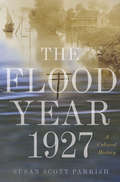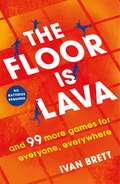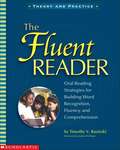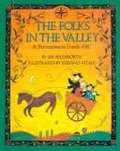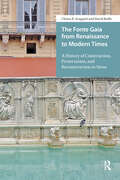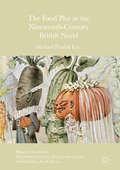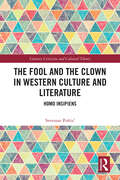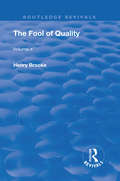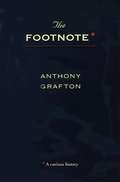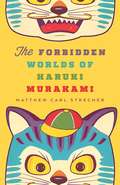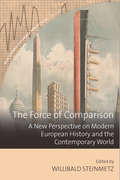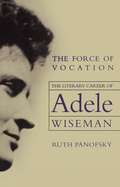- Table View
- List View
The Flood Year 1927: A Cultural History
by Susan Scott ParrishThe Great Mississippi Flood of 1927, which covered nearly thirty thousand square miles across seven states, was the most destructive river flood in U.S. history. Due to the speed of new media and the slow progress of the flood, this was the first environmental disaster to be experienced on a mass scale. As it moved from north to south down an environmentally and technologically altered valley, inundating plantations and displacing more than half a million people, the flood provoked an intense and lasting cultural response. The Flood Year 1927 draws from newspapers, radio broadcasts, political cartoons, vaudeville, blues songs, poetry, and fiction to show how this event took on public meanings.Americans at first seemed united in what Herbert Hoover called a “great relief machine,” but deep rifts soon arose. Southerners, pointing to faulty federal levee design, decried the attack of Yankee water. The condition of African American evacuees in “concentration camps” prompted pundits like W.E.B. Du Bois and Ida B. Wells to warn of the return of slavery to Dixie. And environmentalists like Gifford Pinchot called the flood “the most colossal blunder in civilized history.” Susan Scott Parrish examines how these and other key figures—from entertainers Will Rogers, Miller & Lyles, and Bessie Smith to authors Sterling Brown, William Faulkner, and Richard Wright—shaped public awareness and collective memory of the event.The crises of this period that usually dominate historical accounts are war and financial collapse, but The Flood Year 1927 enables us to assess how mediated environmental disasters became central to modern consciousness.
The Floor is Lava: and 99 more screen-free games for all the family to play
by Ivan Brett'A brilliant book of 100 games you can play anywhere in your house or garden.' The Sun Playing games can be so enjoyable but don't you often find yourself playing the same old games time and time again? Well, why not let Ivan Brett inspire you with over 99 games to entertain any gathering of friends or family? Inside The Floor is Lava you'll find 100 games to satisfy any busy family and most require no equipment other than pencil and paper. There's everything from fiendish brain teasers and number puzzles to witty wordplays and physical challenges. You'll find something for everyone to enjoy and avoid the whole family resorting to screen-time! In short, this is a how-to for turning time together into quality time together. It's time to put down your screens and pick up the fun! You'll find games for every occasion: * occupy the kids on rainy days* have after-dinner fun around the table * liven up a party * cool off in the summer holidays* beat boredom in the car So what are you waiting for? Jump up and get started - the floor is lava Ivan's next book Bored? Games! 101 games to make every day more playful is out in June. You can PRE-ORDER NOW!
The Floor is Lava: and 99 more screen-free games for all the family to play
by Ivan Brett'A brilliant book of 100 games you can play anywhere in your house or garden.' The Sun Playing games can be so enjoyable but don't you often find yourself playing the same old games time and time again? Well, why not let Ivan Brett inspire you with over 99 games to entertain any gathering of friends or family? Inside The Floor is Lava you'll find 100 games to satisfy any busy family and most require no equipment other than pencil and paper. There's everything from fiendish brain teasers and number puzzles to witty wordplays and physical challenges. You'll find something for everyone to enjoy and avoid the whole family resorting to screen-time! In short, this is a how-to for turning time together into quality time together. It's time to put down your screens and pick up the fun! You'll find games for every occasion: * occupy the kids on rainy days* have after-dinner fun around the table * liven up a party * cool off in the summer holidays* beat boredom in the car So what are you waiting for? Jump up and get started - the floor is lava Ivan's next book Bored? Games! 101 games to make every day more playful is out in June. You can PRE-ORDER NOW!
The Flower Alphabet Book (Jerry Pallotta's Alphabet Books)
by Jerry PallottaRoses are red,Violets are blue...And they're only two of the flowers in this book of bright colors and delightful information. Young readers will be fascinated to find out what flower can be used to make a doll, which flower flavors tea, and which flower farmers feed to chickens.Author Jerry Pallotta and illustrator Leslie Evans have collaborated to produce a stunning bouquet of words and pictures about the world of flowers–one of nature's most beautiful gifts.
The Flowering of Modern Chinese Poetry: An Anthology of Verse from the Republican Period
by Herbert Batt Sheldon ZitnerA collection of early twentieth-century vernacular poetry that foreshadows the emergence of the modern Chinese nation.
The Flowers of Evil (SparkNotes Literature Guide Series)
by SparkNotesThe Flowers of Evil (SparkNotes Literature Guide) by Charles Baudelaire Making the reading experience fun! Created by Harvard students for students everywhere, SparkNotes is a new breed of study guide: smarter, better, faster.Geared to what today's students need to know, SparkNotes provides:chapter-by-chapter analysis explanations of key themes, motifs, and symbols a review quiz and essay topics Lively and accessible, these guides are perfect for late-night studying and writing papers.
The Fluent Reader 2nd Ed
by Timothy V. RasinskiTim Rasinski's groundbreaking book has been updated to include coverage of the latest research on fluency, teaching strategies based on that research, new classroom vignettes, and suggestions for using a variety of texts to teach fluency such as poetry, speeches, and monologues and dialogues. You'll also find background information, assessment tools, step-by-step lessons, and teaching tips--plus video clips showing the strategies in action. For use with Grades 1-8.
The Fluent Reader: Oral Reading Strategies for Building Word Recognition, Fluency, and Comprehension
by Timothy V. RasinskiThis book will make you smile with its brilliant explanations of how to teach students to read.
The Folks in the Valley: A Pennsylvania Dutch ABC
by Jim AylesworthA rhyming alphabet book about the people and activities of a Pennsylvania Dutch settlement in a rural valley.
The Fonte Gaia from Renaissance to Modern Times: A History of Construction, Preservation, and Reconstruction in Siena
by Chiara E. Scappini David BoffaThe Fonte Gaia from Renaissance to Modern Times examines the history of Siena's famous public fountain, from its fifteenth-century origins to its eventual replacement by a copy in the nineteenth century (and the modern fate of both). The book explores how both the Risorgimento and the Symbolist movements have shaped our perceptions of the Italian Renaissance, as the Quattrocento was filtered through the lens of contemporary art and politics.
The Food Plot in the Nineteenth-Century British Novel
by Michael Parrish LeeThis book is about food, eating, and appetite in the nineteenth-century British novel. While much novel criticism has focused on the marriage plot, this book revises the history and theory of the novel, uncovering the "food plot" against which the marriage plot and modern subjectivity take shape. With the emergence of Malthusian population theory and its unsettling links between sexuality and the food supply, the British novel became animated by the tension between the marriage plot and the food plot. Charting the shifting relationship between these plots, from Jane Austen's polite meals to Bram Stoker's bloodthirsty vampires, this book sheds new light on some of the best-know works of nineteenth-century literature and pushes forward understandings of narrative, literary character, biopolitics, and the novel as a form. From Austen to Zombies, Michael Parrish Lee explores how the food plot conflicts with the marriage plot in nineteenth-century literature and beyond, and how appetite keeps rising up against taste and intellect. Lee's book will be of interest to Victorianists, genre theorists, Food Studies, and theorists of bare life and biopolitics. - Regenia Gagnier, Professor of English, University of Exeter In The Food Plot Michael Lee engages recent and classic scholarship and brings fresh and provocative readings to well worked literary critical ground. Drawing upon narrative theory, character study, theories of sexuality, and political economy, Professor Lee develops a refreshing and satisfyingly deep new reading of canonical novels as he develops the concept of the food plot. The Food Plot should be of interest to specialists in the novel and food studies, as well as students and general readers. - Professor April Bullock, California State University, Fullerton, USA
The Fool and the Clown in Western Culture and Literature: Homo Insipiens (Literary Criticism and Cultural Theory)
by Svetozar PoštićThe Fool and the Clown in Western Culture and Literature: Homo Insipiens is a fascinating description of these two perennial figures in European and North American history, folklore, theater, literature, arts, and popular culture. The first part of the book separates them into ten different subcategories and recounts the most vivid and influential manifestations of different kinds of fools and clowns in cultural history. The second part singles out three European writers who have made a significant contribution to the elucidation of the concept of folly. William Shakespeare, Fyodor Dostoevsky, and Samuel Beckett have painted an entire gallery of fools, clowns, and buffoons, created not only to entertain but also to explore the meaning of human life. The most important concepts in the book are illustrated by captivating characters and tales that have made people both laugh and arrive at a deeper understanding of themselves and the world around them.
The Fool in European Theatre
by Tim PrentkiWhy is folly essential to the functioning of a healthy society? Why is theatre a natural home for madness? The answers take the reader on a journey embracing Shakespeare and Jonson, Brecht and Beckett, B#65533;chner and Boal. From Falstaff to Fo via Figaro, this study examines the art of telling truth to power and surviving long enough to have a laugh.
The Fool of Quality: Volume 1 (Routledge Revivals)
by Henry BrookeFirst published in 1906, The Fool of Quality; a picaresque and sentimental novel by the Irish writer Henry Brooke, is the only one of his works which has enjoyed any great reputation. The somewhat shapeless plot is an account of the doings of young Harry Clinton, who, rejected by his decadent and aristocratic father, is educated on enlightened principles by his philanthropic uncle. Thus equipped to fight the evils of the world the innocent yet wise hero does his best to better the lot of the unfortunate Hammel Clement and his family, and other deserving cases, in the intervals between the author's frequent philosophical digressions and commentaries on the action. It is the first of five volumes.
The Fool of Quality: Volume 2 (Routledge Revivals)
by Henry BrookeFirst published in 1906, The Fool of Quality; a picaresque and sentimental novel by the Irish writer Henry Brooke, is the only one of his works which has enjoyed any great reputation. The somewhat shapeless plot is an account of the doings of young Harry Clinton, who, rejected by his decadent and aristocratic father, is educated on enlightened principles by his philanthropic uncle. Thus equipped to fight the evils of the world the innocent yet wise hero does his best to better the lot of the unfortunate Hammel Clement and his family, and other deserving cases, in the intervals between the author's frequent philosophical digressions and commentaries on the action. This book is the second of five volumes.
The Fool of Quality: Volume 3 (Routledge Revivals)
by Henry BrookeFirst published in 1906, The Fool of Quality; a picaresque and sentimental novel by the Irish writer Henry Brooke, is the only one of his works which has enjoyed any great reputation. The somewhat shapeless plot is an account of the doings of young Harry Clinton, who, rejected by his decadent and aristocratic father, is educated on enlightened principles by his philanthropic uncle. Thus equipped to fight the evils of the world the innocent yet wise hero does his best to better the lot of the unfortunate Hammel Clement and his family, and other deserving cases, in the intervals between the author's frequent philosophical digressions and commentaries on the action. This book is the third of five volumes.
The Fool of Quality: Volume 4 (Routledge Revivals)
by Henry BrookeFirst published in 1906, The Fool of Quality; a picaresque and sentimental novel by the Irish writer Henry Brooke, is the only one of his works which has enjoyed any great reputation. The somewhat shapeless plot is an account of the doings of young Harry Clinton, who, rejected by his decadent and aristocratic father, is educated on enlightened principles by his philanthropic uncle. Thus equipped to fight the evils of the world the innocent yet wise hero does his best to better the lot of the unfortunate Hammel Clement and his family, and other deserving cases, in the intervals between the author's frequent philosophical digressions and commentaries on the action. This book is the fourth of five volumes.
The Fool of Quality: Volume 5 (Routledge Revivals)
by Henry BrookeFirst published in 1906, The Fool of Quality; a picaresque and sentimental novel by the Irish writer Henry Brooke, is the only one of his works which has enjoyed any great reputation. The somewhat shapeless plot is an account of the doings of young Harry Clinton, who, rejected by his decadent and aristocratic father, is educated on enlightened principles by his philanthropic uncle. Thus equipped to fight the evils of the world the innocent yet wise hero does his best to better the lot of the unfortunate Hammel Clement and his family, and other deserving cases, in the intervals between the author's frequent philosophical digressions and commentaries on the action. This book is the fifth of five volumes.
The Footnote: A Curious History
by Anthony GraftonThe weapon of pedants, the scourge of undergraduates, the bête noire of the âeoenewâe liberated scholar: the lowly footnote, long the refuge of the minor and the marginal, emerges in this book as a singular resource, with a surprising history that says volumes about the evolution of modern scholarship. In Anthony Graftonâe(tm)s engrossing account, footnotes to history give way to footnotes as history, recounting in their subtle way the curious story of the progress of knowledge in written form. Grafton treats the development of the footnoteâe"the one form of proof normally supplied by historians in support of their assertionsâe"as writers on science have long treated the development of laboratory equipment, statistical arguments, and reports on experiments: as a complex story, rich in human interest, that sheds light on the status of history as art, as science, and as an institution. The book starts in the Berlin of the brilliant nineteenth-century historian Leopold von Ranke, who is often credited with inventing documented history in its modern form. Casting back to antiquity and forward to the twentieth century, Graftonâe(tm)s investigation exposes Rankeâe(tm)s position as a far more ambiguous one and offers us a rich vision of the true origins and gradual triumph of the footnote. Among the protagonists of this story are Athanasius Kircher, who built numerous documents into his spectacularly speculative treatises on ancient Egypt and China; Pierre Bayle, who made the footnote a powerful tool in philosophical and historical polemics; and Edward Gibbon, who transformed it into a high form of literary artistry. Proceeding with the spirit of an intellectual mystery and peppered with intriguing and revealing remarks by those who âeoemadeâe this history, The Footnote brings what is so often relegated to afterthought and marginalia to its rightful place in the center of the literary life of the mind.
The Forbidden Body: Sex, Horror, and the Religious Imagination
by Douglas E. CowanFrom creature features to indie horror flicks, find out what happens when sex, horror, and the religious imagination come togetherThroughout history, religion has attempted to control nothing so much as our bodies: what they are and what they mean; what we do with them, with whom, and under what circumstances; how they may be displayed—or, more commonly, how they must be hidden. Yet, we remain fascinated, obsessed even, by bodies that have left, or been forced out of, their “proper” place. The Forbidden Body examines how horror culture treats these bodies, exploring the dark spaces where sex and the sexual body come together with religious belief and tales of terror.Taking a broad approach not limited to horror cinema or popular fiction, but embracing also literary horror, weird fiction, graphic storytelling, visual arts, and participative culture, Douglas E. Cowan explores how fears of bodies that are tainted, impure, or sexually deviant are made visible and reinforced through popular horror tropes. The volume challenges the reader to move beyond preconceived notions of religion in order to decipher the “religious imagination” at play in the scary stories we tell over and over again. Cowan argues that stories of religious bodies “out of place” are so compelling because they force us to consider questions that religious belief cannot comfortably answer: Who are we? Where do we come from? Why do we suffer? And above all, do we matter? As illuminating as it is unsettling, The Forbidden Body offers a fascinating look at how and why we imagine bodies in all the wrong places.
The Forbidden Worlds of Haruki Murakami
by Matthew Carl StrecherIn an &“other world&” composed of language—it could be a fathomless Martian well, a labyrinthine hotel or forest—a narrative unfolds, and with it the experiences, memories, and dreams that constitute reality for Haruki Murakami&’s characters and readers alike. Memories and dreams in turn conjure their magical counterparts—people without names or pasts, fantastic animals, half-animals, and talking machines that traverse the dark psychic underworld of this writer&’s extraordinary fiction.Fervently acclaimed worldwide, Murakami&’s wildly imaginative work in many ways remains a mystery, its worlds within worlds uncharted territory. Finally in this book readers will find a map to the strange realm that grounds virtually every aspect of Murakami&’s writing. A journey through the enigmatic and baffling innermost mind, a metaphysical dimension where Murakami&’s most bizarre scenes and characters lurk, The Forbidden Worlds of Haruki Murakami exposes the psychological and mythological underpinnings of this other world. Matthew Carl Strecher shows how these considerations color Murakami&’s depictions of the individual and collective soul, which constantly shift between the tangible and intangible but in this literary landscape are undeniably real. Through these otherworldly depths The Forbidden Worlds of Haruki Murakami also charts the writer&’s vivid &“inner world,&” whether unconscious or underworld (what some Japanese critics call achiragawa, or &“over there&”), and its connectivity to language. Strecher covers all of Murakami&’s work—including his efforts as a literary journalist—and concludes with the first full-length close reading of the writer&’s newest novel, Colorless Tsukuru Tazaki and His Years of Pilgrimage.
The Force of Comparison: A New Perspective on Modern European History and the Contemporary World (New German Historical Perspectives #11)
by Willibald SteinmetzIn an era defined by daily polls, institutional rankings, and other forms of social quantification, it can be easy to forget that comparison has a long historical lineage. Presenting a range of multidisciplinary perspectives, this volume investigates the concepts and practices of comparison from the early modern period to the present. Each chapter demonstrates how comparison has helped to drive the seemingly irresistible dynamism of the modern world, exploring how comparatively minded assessors determine their units of analysis, the criteria they select or ignore, and just who it is that makes use of these comparisons—and to what ends.
The Force of Truth: Critique, Genealogy, and Truth-Telling in Michel Foucault
by Daniele LorenziniA groundbreaking examination of Michel Foucault's history of truth. Many blame Michel Foucault for our post-truth and conspiracy-laden society. In this provocative work, Daniele Lorenzini argues that such criticism fundamentally misunderstands the philosopher’s project. Foucault did not question truth itself but what Lorenzini calls “the force of truth,” or how some truth claims are given the power to govern our conduct while others are not. This interest, Lorenzini shows, drove Foucault to articulate a new ethics and politics of truth-telling precisely in order to evade the threat of relativism. The Force of Truth explores this neglected dimension of Foucault’s project by putting his writings on regimes of truth and parrhesia in conversation with early analytic philosophy and by drawing out the “possibilizing” elements of Foucault’s genealogies that remain vital for practicing critique today.
The Force of Vocation: The Literary Career of Adele Wiseman
by Ruth PanofskyAdele Wiseman was a seminal figure in Canadian letters. Always independent and wilful, she charted her own literary career, based on her unfailing belief in her artistic vision. In The Force of Vocation, the first book on Wiseman's writing life, Ruth Panofsky presents Wiseman as a writer who doggedly and ambitiously perfected her craft, sought a wide audience for her work, and refused to compromise her work for marketability.Based on previously unpublished archival material and personal interviews with publishers, editors, and writers, The Force of Vocation charts Wiseman's career from her internationally acclaimed first novel, The Sacrifice, through her near career-ending decisions to move into drama and non-fiction, to her many years as a dedicated mentor to other writers. In the process, Panofsky presents a remarkable and compelling story of the intricate negotiations and complex relationships that exist among authors, editors, and publishers.
